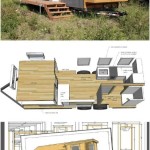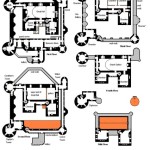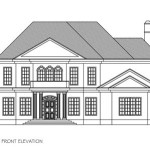Project Plan for a House Extension
Extending one's home presents a significant undertaking, requiring meticulous planning and execution. A well-structured project plan serves as the roadmap for a successful extension, ensuring the project remains on time, within budget, and meets the desired specifications. This plan outlines the key phases and considerations involved in undertaking a house extension project.
Phase 1: Initial Concept and Feasibility Study
The initial phase focuses on defining the project's scope and assessing its feasibility. This involves identifying the needs and objectives driving the extension, such as creating additional living space, improving functionality, or enhancing property value. Preliminary research should be conducted regarding local planning regulations, building codes, and potential constraints.
Budget considerations are paramount at this stage. A preliminary budget should be established, outlining estimated costs for design, materials, labor, and permits. It's advisable to allocate a contingency fund for unforeseen expenses. A feasibility study helps determine whether the project is viable within the established budget and timeframe.
Phase 2: Design and Planning
Once the initial concept is established, the design and planning phase commences. Engaging an architect is crucial for translating the project vision into detailed architectural drawings. These drawings will serve as the blueprint for the construction process. The architect will consider factors like structural integrity, aesthetics, and building regulations. Collaboration with structural engineers and other specialists may be necessary to ensure the design's feasibility and safety.
Obtaining necessary planning permissions from local authorities is a critical step in this phase. The architect typically manages this process, submitting the required documentation and addressing any queries from the planning department. This process can take time, so factoring it into the project timeline is crucial.
Phase 3: Pre-Construction
The pre-construction phase involves finalizing all details before construction begins. This includes selecting a reputable building contractor and obtaining detailed quotes. Comparing quotes and evaluating contractor experience and credentials is essential. A comprehensive building contract should be established, outlining the scope of work, payment schedules, and project timelines.
Ordering materials and scheduling deliveries is another critical component of this phase. Lead times for certain materials should be considered to avoid delays during construction. Ensuring access to the site for deliveries and waste removal also requires careful planning.
Phase 4: Construction
The construction phase is the most visible and active part of the project. Regular site meetings with the contractor are essential for monitoring progress, addressing any issues, and ensuring adherence to the agreed-upon specifications. Maintaining open communication between the homeowner, architect, and contractor facilitates a smooth construction process. Detailed record-keeping of progress, costs, and any changes to the original plan is highly recommended.
Implementing robust safety measures on the construction site is paramount. The contractor is responsible for ensuring the site adheres to health and safety regulations, protecting both workers and the public. Regular inspections and adherence to safety protocols contribute to a safe and successful project.
Phase 5: Post-Construction
Upon completion of the construction work, a thorough inspection is necessary to ensure all work meets the agreed-upon standards and complies with building regulations. This often involves a final inspection by the local authority to issue a certificate of completion. Snagging, which involves identifying and rectifying any minor defects or imperfections, is an essential part of this phase.
Final payments to the contractor are typically made upon successful completion of the project and sign-off by all parties. Comprehensive documentation, including warranties and guarantees for materials and workmanship, should be collected and organized. A detailed record of all costs incurred throughout the project should be maintained for future reference.
Project Management Throughout the Lifecycle
Effective project management practices are essential throughout the entire extension lifecycle. This includes consistent monitoring of progress against the established timeline and budget. Utilizing project management tools and software can assist in tracking tasks, managing resources, and maintaining clear communication among all stakeholders. Regularly reviewing and updating the project plan as needed helps ensure the project remains on track and achieves its objectives.
Contingency planning is a critical aspect of project management. Anticipating potential challenges and developing contingency plans for unforeseen circumstances, like weather delays or material shortages, helps minimize disruptions and keeps the project moving forward. Flexibility and adaptability are key to navigating unforeseen challenges and ensuring a successful outcome. Clear communication channels and established decision-making processes are essential for effective problem-solving and efficient project management.

Working With Us On Your Home Extension Renovation Or New Build Project Riai Architects Spacious Dublin

House Extension Advice Sigma Homes Design Builders Cork

How Long Does It Take To Build A House Extension John Webster Architecture

Terraced House Extension Plans

House Extension Planner

Example Deck House Extension And Alteration Plans Near Brisbane

House Extensions Front Real Single Double Story Plan Masters

Working With Us On Your Home Extension Renovation Or New Build Project Riai Architects Spacious Dublin

Rightmove Co House Extension Plans Home Design Floor Plan

Kdw 199 House Extension Cube Architecten Archdaily








